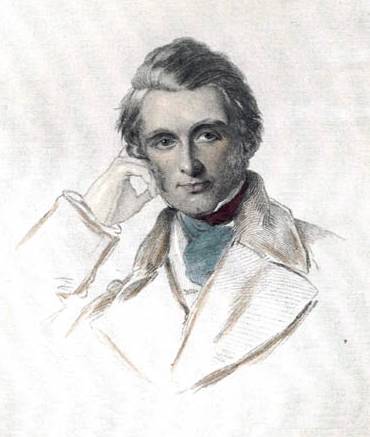The scenery of the sky is thus formed of an infinitely graduated series of systematic forms of cloud, each of which has its own region in which alone it is formed, and each of which has specific characters which can only be properly determined by comparing them as they are found clearly distinguished by intervals of considerable space. I shall therefore consider the sky as divided into three regions: the upper region, or region of the cirrus; the central region, or region of the stratus; the lower region, or the region of the rain-cloud.
The cirrus cloud:
First, Symmetry. They are nearly always arranged in some definite and evident order, commonly in long ranks reaching sometimes from the zenith to the horizon, each rank composed of an infinite number of transverse bars of about the same length, each bar thickest in the middle, and terminating in a traceless vaporous point at each side.
Secondly, Sharpness of Edge. The edges of the bars of the upper clouds which are turned to the wind, are often the sharpest which the sky shows; no outline whatever of any other kind of cloud, however marked and energetic, ever approaches the delicate decision of these edges.
Thirdly, Multitude. The delicacy of these vapours is sometimes carried into such an infinity of division, that no other sensation of number that the earth or heaven can give is so impressive. Number is always most felt when it is symmetrical (vide Burke on "Sublime" part ii.sect. 8), and, therefore, no sea-waves nor fresh leaves make their number so evident or so impressive as these vapours. Nor is nature content with an infinity of bars or lines alone; each bar is in its turn severed into a number of small undulatory masses, more or less connected according to the violence of the wind. When this division is merely affected by undulation, the cloud exactly resembles sea-sand ribbed by the tide; but when the division amounts to real separation we have the mottled or mackerel skies. Commonly, the greater the division of its bars, the broader and more shapeless is the rank or field, so that in the mottled sky it is lost altogether, and we have large irregular fields of equal size, masses like flocks of sheep; such clouds are three or four thousand feet below the legitimate cirrus. I have seen them cast a shadow on Mont Blanc at sunset, so that they must descend nearly to within fifteen thousand feet of the earth.
Fourthly, Purity of Colour. The nearest of these clouds, those over the observer's head, being at least three miles above him, and the greater number of those which enter the ordinary sphere of vision, farther from him still, their dark sides are much greyer and cooler than those of other clouds, owing to their distance. They are composed of the purest aqueous vapour, free from all foulness of earthy gases, and of this in the lightest and most ethereal state in which it can be, to be visible. Farther, they receive the light of the sun in a state of far greater intensity than lower objects, the beams being transmitted to them through atmospheric air far less dense, and wholly unaffected by mist, smoke, or any other impurity. Hence their colours are more pure and vivid, and their white less sullied than those of any other clouds.
Lastly, Variety. Variety is never so conspicuous, as when it is united with symmetry. The perpetual change of form in other clouds is monotonous in its very dissimilarity, nor is difference striking where no connection is implied; but if through a range of barred clouds crossing half the heaven, all governed by the same forces and falling into one general form, there be yet a marked and evident dissimilarity between each member of the great mass, one more finely drawn, the next more delicately moulded, the next more gracefully bent, each broken into differently modelled and variously numbered groups, the variety is doubly striking, because contrasted with the perfect symmetry of which it forms a part.
 |
| JMW Turner: Mercury & Argos |





No comments:
Post a Comment